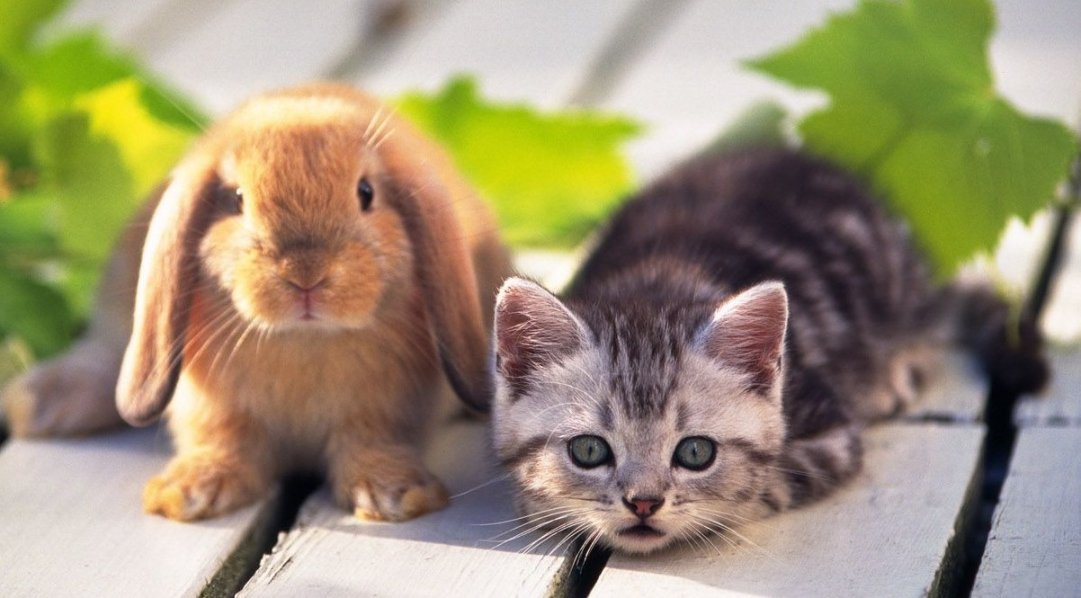Do Rabbits Get Along With Cats?
Many pet owners wonder if rabbits and cats can live together peacefully. While some rabbits and cats may get along well, it ultimately depends on the personalities and behaviors of the individual animals. Here, we will discuss how rabbits and cats can coexist and provide some tips for introducing them to each other.

Benefits of Rabbits and Cats Living Together
- Companionship: Rabbits and cats can provide each other with companionship, especially if they are the only pets in the household.
- Socialization: Living with a different species can help socialize both rabbits and cats, making them more accepting and tolerant of other animals.
- Exercise: Cats may be intrigued by a hopping rabbit, which can encourage them to play and exercise more.
- Mental Stimulation: The presence of another animal can provide mental stimulation and prevent boredom for both rabbits and cats.
Introducing Rabbits and Cats
Introducing rabbits and cats should be done gradually and carefully to ensure their safety and establish a positive relationship. Here are some steps to follow:
- Keep them separate initially: When bringing a new rabbit or cat into the household, it’s important to keep them in separate areas for a few days to let them adjust to the new smells and sounds.
- Exchange scents: Rub a cloth or towel on each animal and place it near the other’s space. This will help them get accustomed to each other’s scent.
- Supervised meetings: Once both animals seem comfortable with each other’s scent, you can start allowing supervised face-to-face meetings. Keep the interactions short and positive, rewarding both animals for calm behavior.
- Gradual increase in interaction: Over time, gradually increase the duration of their interactions and the areas they are allowed to explore together, always under supervision.
- Provide separate spaces: Make sure each animal has their own safe space to retreat to if they feel overwhelmed or need a break from each other.
Signs of Compatibility
While every animal is different, there are some positive signs that indicate rabbits and cats are getting along:
- Curiosity: Both animals show interest in each other, sniffing and observing without exhibiting signs of aggression or fear.
- Playfulness: They engage in playful behaviors, such as chasing each other without any signs of aggression.
- Relaxed body language: Both animals have relaxed body postures, indicating they feel comfortable and at ease in each other’s presence.
- Grooming: Mutual grooming is a positive sign of acceptance between rabbits and cats.
Introducing rabbits and cats should be done gradually and carefully to ensure their safety and establish a positive relationship.
FAQs about Rabbits and Cats
1. Can cats harm rabbits?
While cats are natural predators, they can harm rabbits if not properly supervised or introduced. It’s important to ensure the safety of both animals during their interactions.
2. Can rabbits defend themselves against cats?
Rabbits are prey animals and are generally not equipped to defend themselves against cats. They rely on their ability to flee and hide from potential threats.
3. How long does it take for rabbits and cats to get along?
The time it takes for rabbits and cats to get along can vary. It may take a few weeks or even months for them to establish a positive relationship. Patience and proper introduction are key.
4. Can rabbits and cats share the same living space?
With proper introduction and supervision, rabbits and cats can share the same living space. However, it’s important to provide each animal with their own safe and separate areas to retreat to if needed.
In conclusion, rabbits and cats can potentially get along and provide each other with companionship and stimulation. However, it requires careful and gradual introduction, as well as ongoing supervision to ensure their safety and well-being.
Related Articles…
Copyright Notice:
The images displayed here are sourced from the internet, with copyrights held by respective owners. For removal of any copyrighted image, please email us.